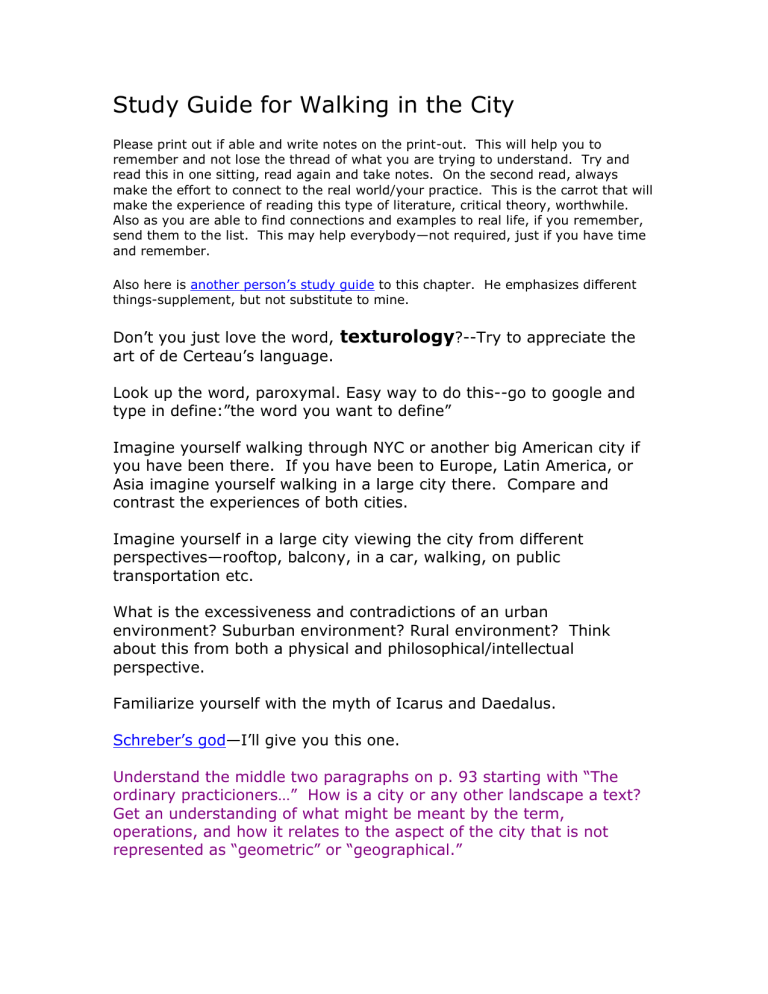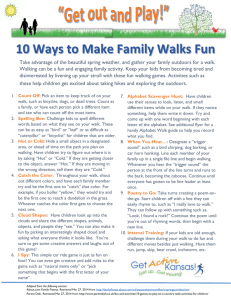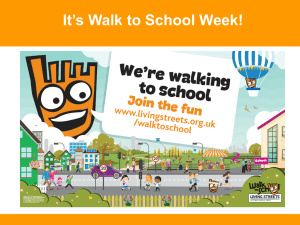Study guide for Walking in the City

Study Guide for Walking in the City
Please print out if able and write notes on the print-out. This will help you to remember and not lose the thread of what you are trying to understand. Try and read this in one sitting, read again and take notes. On the second read, always make the effort to connect to the real world/your practice. This is the carrot that will make the experience of reading this type of literature, critical theory, worthwhile.
Also as you are able to find connections and examples to real life, if you remember, send them to the list. This may help everybody—not required, just if you have time and remember.
Also here is another person’s study guide to this chapter. He emphasizes different things-supplement, but not substitute to mine.
Don’t you just love the word,
texturology
?--Try to appreciate the art of de Certeau’s language.
Look up the word, paroxymal. Easy way to do this--go to google and type in define:”the word you want to define”
Imagine yourself walking through NYC or another big American city if you have been there. If you have been to Europe, Latin America, or
Asia imagine yourself walking in a large city there. Compare and contrast the experiences of both cities.
Imagine yourself in a large city viewing the city from different perspectives—rooftop, balcony, in a car, walking, on public transportation etc.
What is the excessiveness and contradictions of an urban environment? Suburban environment? Rural environment? Think about this from both a physical and philosophical/intellectual perspective.
Familiarize yourself with the myth of Icarus and Daedalus.
Schreber’s god —I’ll give you this one.
Understand the middle two paragraphs on p. 93 starting with “The ordinary practicioners…” How is a city or any other landscape a text?
Get an understanding of what might be meant by the term, operations, and how it relates to the aspect of the city that is not represented as “geometric” or “geographical.”
There is the city and the concept of the city. Please define each and describe their relationship to each other.
Operational concepts of the “city”
Production of its own space—I always think of this like an organization chart produced by a corporate entity which due to it organization is always able to accommodate more categories of organization. These charts types always shows how things “are” or how they are supposed to be, but in fact very much ignore how the relationships between categories and sub-categories “really” are or how they are enacted in real life.
Idea of nowhen—what does it mean to flatten out the date of the plane projection? Think of flatten metaphorically.
Universal and anonymous subject—I think you can figure this out form the text. You might want to look up the model called Hobbe’s State.
How do the “waste” or non-products of a city make the order of networks denser? Think of concrete examples even from the news headlines of the present.
Define panoptic. Try and find an image of a panopticon. Think of public spaces that you inhabit that have a large degree of panopticness.
Why does deCerteau claim that the concept city is dying? Make sure you have a clear ideas what is meant by concept city before you try and answer this question.
Return of practices
How can focusing on the negative privilege a discourse?
Try and think of real world examples of “everyday regulation and surreptitious creativities.”
What might de Certeau mean by discipline?
How does the organization of details (in say a bureaucracy) manage and discipline human multiplicity?
Understand the phrase, “collective mode of administration and individual mode of reappropriation.”
Chorus of idle footsteps
What does the sentence, “It exhibits the voracious property that the geographical system has of being able to transform actions into legibility, but in doing so causes a way of being in the world to be forgotten” mean?
Pedestrian speech acts
How does deCerteau relate the decisions we make when walking to speech acts? You may first have to understand what constitutes a speech act. See bottom of p97.
Think about the routes you travel day in and day out especially when walking. Perhaps even right them down. Then think about how you
“do” those routes. Do you walk the exact same way every day? (And
I mean exact) What decisions influence you to walk your route the same or differently?
Why can’t the enunciatory operations of walking be reduced to a graphic trail?
Walking rhetorics
Make sure you understand the terms, style and use, and their relationship to one another.
Do you walk in different ways in different situations? How does this come about?
Look up equivocalness.
If the “proper meaning” of a space is constructed by architect and urban planners, how do people who inhabit the space do “slang” or the vernacular? Think of examples. This notion is particularly important as a potential site for art making.
Understand synecdoche and asyndeton.
Think of examples of places that are referred to synecdochially.
In a handbook of rhetoric devices , I read that “ asyndeton offers the feeling of speed and concision to lists and phrases and clauses”, “gives the effect of unpremeditated multiplicity, of an extemporaneous rather than a labored account”, “spontaneity”, “strong, climatic” emphasis, synonymous-ness, the impression of
incompleteness. Think of ways of walking or interacting with a landscape to which the idea of asyndeton could be applied.
How does deCerteau define myth in the context of this chapter?
One definition of trees of gestures--bodies that refuse to stay still for the fixing necessary for the establishing of the proper place, for the creation of intelligibility necessary for the dynamics of institutionalisation and political control--from Andrew
Quick’s dissertation. Think of examples the activities/movement of groups of people “make some parts of the city disappear and exaggerate others, distorting it, fragmenting it, and diverting it form its immobile order.”
Myths: what makes things go
Define oneiric and pullulation.
How is walking like dreaming?
Names and symbols
How potentially does a proper naming of a place affect the experience of another place or determine a relationship between a place and its interlocutor?
This country is rife with examples of this, but think, too, of how this personally influences or even controls your experience of place. How does an actual place metamorphize into an emblem?
Define toponymy.
Decisions regarding motility impacted by memory of place
Understand the role of the believable, the memorable, and the primitive. Think of a place you habituate and try and apply these symbolic functions to how you interact with this place.
Credible things and memorable things: habitability univocity
Understand the notion of “local authority”. Examples of local authority?
What purpose/s could be served by eradicating stories and legends that inhabit places? What are the consequences of this? How is this related to walking?
Next time you walk somewhere think about or as you walk, take note of every little thing that comes into your head. How many of your thoughts are about where you are now? Now juxtapose your every little thought with what is actually around you or as de Certeau would say the “constructed order.”
Define lacunae.
Compare and contrast rumors and stories.
Think of place that you where you have spent a lot of time. “Walk” that place. Pretend that you are describing the landscape to a person you know quite well. As you “walk” and talk differentiate between the parts of the conversation that describe what is currently there now and the parts of the conversation that detail what is not longer present.
I s it possible to see memory as negative space?
Think of the last time you visited a “historic place.”
Ponder the idea of a historic place. What can we know about such a place and what can we imagine that we do not know?
Childhood and metaphors of places
Define palimpsest.
In your own words, what does the practice of space mean?







